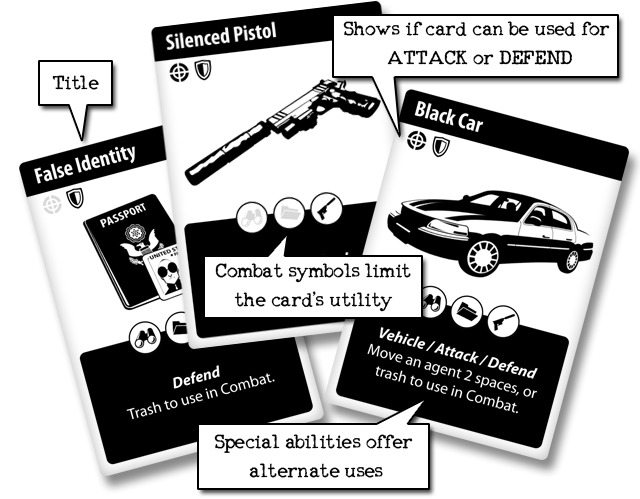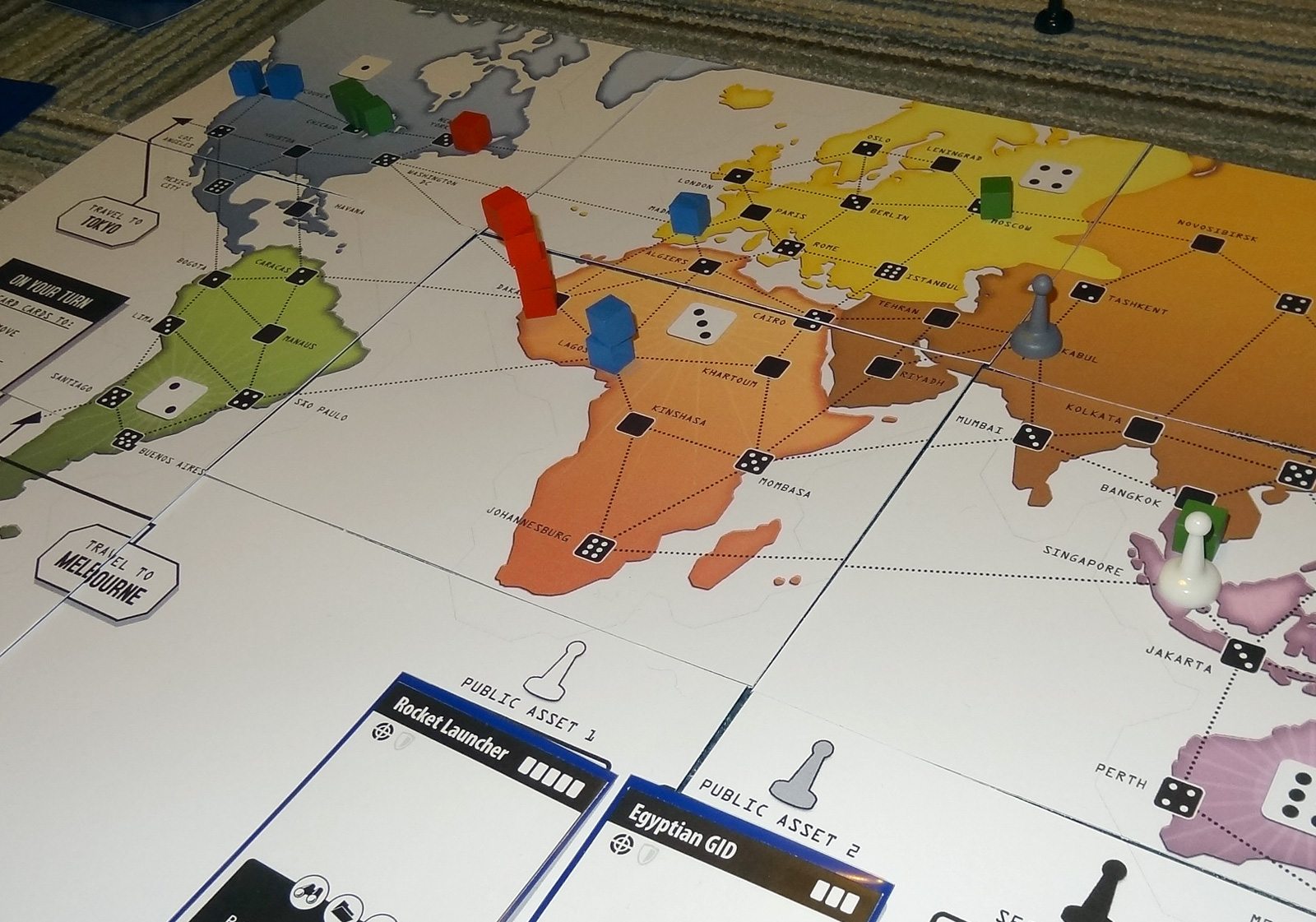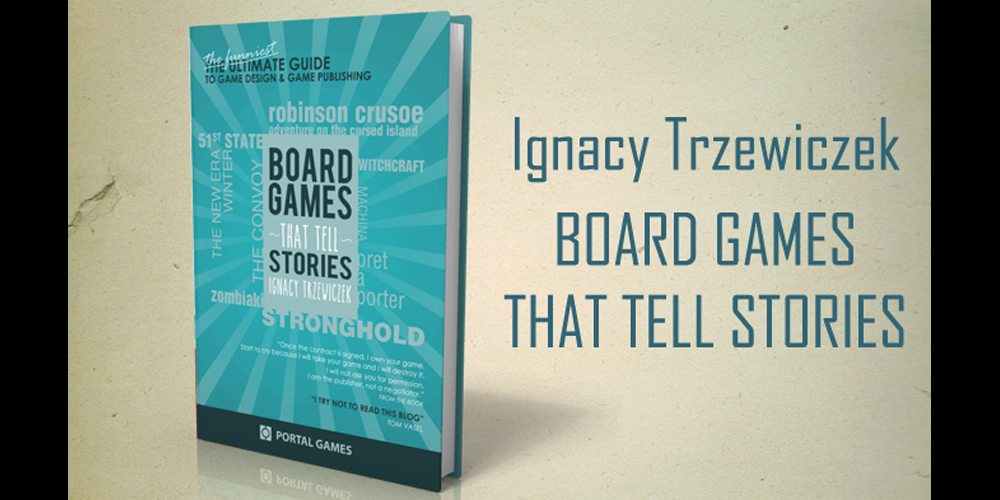Collect key assets. Eliminate enemy agents. See the world. Web of Spies mashes up deck-building with a high-stakes chase all over the globe.
At a glance: Web of Spies is for 2 to 4 players, ages 14 and up, and takes about an hour to play. It’s currently on Kickstarter, and the basic pledge level for a copy of the game is $40. I did play it with my kids (8 and 10) and they were able to grasp the mechanics pretty easily, though it’s up to you if you want your kids playing games with silenced pistols and double agents. Since Web of Spies involves direct attacks and player elimination, it’s best played with people who won’t take that personally. Good spies know that it’s all about the mission, nothing personal.
New to Kickstarter? Read our crowdfunding primer.

Components:
- 1 game board
- 108 cards (40 Starting cards, 68 Asset cards)
- 4 player mats
- 2 six-sided dice
- 3 Asset markers
- 20 Spy tokens (5 per player)
I played a demo prototype so the components were not final quality. For instance, the board was actually several small pieces of cardstock that I just laid together on the table, and not all of the cards had artwork. However, the artwork I did see has a nice, stylized look, sharp and clean and just a little cartoony.
The final look of the Asset markers and Spy tokens haven’t yet been determined, though designer Cole Medeiros has mentioned that they will be different from what’s pictured. Since the Asset markers in the prototype are plastic pawns, we often made the mistake of moving them instead of our spies (the cubes)–but Medeiros assures me he’ll pick something that doesn’t look like a person for the Asset markers.

Most of the cards have a few different icons indicating how they can be used: Attack and/or Defense, or Sabotage. All the cards (except starting cards) also have icons in the top right corner indicating how much it costs to purchase that card. For cards that can be used in combat (attack or defense), there are three icons across the center: binoculars, file folder, and pistol. These determine which cards can be played during a combat. Finally, there may be some other instructional text at the bottom. For the most part, I found the cards very straightforward and easy to understand.
The player mat is basically used just for two things: to store any “trophies” when you eliminate other agents, and to point to your draw pile and discard pile. The reason you need that is because the discard pile is face-down (unlike most deck-building games), so you don’t want to lose track of which is which.
The rulebook is available as a PDF here.
The goal of the game is to have the most spies left when one player is eliminated.
To set up, each player will take a starting deck of 10 cards: 7 basic cards, 1 Black Car, 1 False Identity, and 1 Silenced Pistol. The basic cards just show the picture of an agent and have no special abilities. Each player also takes their 5 spy tokens and a player mat.

The starting player will roll dice to determine a starting location: the white die corresponds to a region on the board, and the black die corresponds to a particular location in that region. The other players will roll a random location in the same region–no two players may start in the same location. Everyone shuffles their own deck and draws 5 cards.
Note: Web of Spies is a deck-building game, which means that everyone has their own draw pile and discard pile. As you play cards, you put them in your own discard pile, and when you run out of cards to draw, you shuffle your discard pile and create a new deck.

The Asset cards are shuffled, and three are dealt out as the starting assets. Two are Public Assets and are placed face-up on the board, and the third is a Secret Asset, placed face-down. Roll dice to determine the locations of these three Assets, and mark them with the markers. Each location may only contain one Asset.
On your turn, you may play any number of cards from your hand, either for the effect indicated on the card, or to move and buy Assets. In general, cards are discarded face-down, but if you’re using a card for its effect, you must reveal it first before discarding it. Moving simply costs one card per space per spy, but some vehicle cards will allow you to move farther. To buy an Asset, you must have more spies in that location than anyone else. Then you discard a number of cards from your hand equal to the cost of the Asset, and then place the Asset in your discard pile. The Secret Asset always costs 2 cards to purchase, though its actual value will vary.
If you’re in the same location as another player, you may initiate combat once per location. Any card that has the Attack icon (a target) in the corner may be used as an attack, and some cards will have special effects when you attack explained on the card. In general, though, after you play an Attack, the other player may play a Defense card (any card with a shield), as long as it has at least one combat symbol that matches your Attack. You may respond with another Attack if you can match symbols with the Defense card, and so on. Whoever is able to play the last card in a combat wins. If the Attacker wins, they kill one enemy spy and place the token on their player mat as a trophy. If the Defender wins, nothing happens but combat ends.
Some cards say that you must “Trash” them for their abilities–these go into a separate Trash pile, not your personal discard pile, which effectively makes them one-time-use cards.
After you’ve played as many cards as you want or are able to, you discard anything you haven’t played, draw back up to five cards, and then replace any Assets that were acquired. Roll the dice to place any new Asset markers on the board, and refill the empty card slots on the board.
The game ends when one player has been completely eliminated. The player with the most spies left on the board wins. If there’s a tie, the player with the most trophies wins. If there’s still a tie, the game continues until another player is eliminated.

The Verdict
Web of Spies is designed by Cole Medeiros, who previously designed GUBS, a kids’ card game published by Gamewright, and it’s quite different from his earlier game. Deck-building is one of my favorite mechanics for reasons I can’t entirely explain (I think it has to do with the way it’s like building up an efficient system) so I’m always curious to see the different ways game designers incorporate it into their games. Although Web of Spies does use deck-building, it doesn’t always feel like a deck-building game.
So here’s what is like other deck-building games: you start with a weak set of cards, and over the course of the game you acquire more powerful and useful cards, cycling them into your deck each time you reshuffle. Web of Spies uses the style of a limited set of random available cards at a time, rather than the Dominion-style stacks of the same cards that everyone can purchase.
Instead of special currency cards or a currency amount on each card, Web of Spies simply counts almost all cards equally: any card, whether it’s one of your basic nothing-special cards or your expensive Rocket Launcher, counts as 1 card toward buying an Asset. There are just a few Assets that count as more cards when buying, but otherwise it’s a 1-for-1 deal.
What makes Web of Spies different is the fact that you have to chase down Assets by getting to a particular geographic location in order to add to your deck. Rather than being able to buy cards nearly every turn, you’ll spend a lot more of your turns jockeying for position, outnumbering your opponents at an Asset’s location either by getting more of your spies there or eliminating the enemy. Since there are only three Assets on the board at any given time, and new Assets appear at a random location, you’re always on the move, trying to spread your spies out (in a web, perhaps?) to improve your chances of grabbing the next Asset that pops up.
But it’s also important to remember that building your deck is simply a means to an end, not an end in itself. The real goal, of course, is to eliminate your enemies. Of course, you’ll have to build your deck a little in order to do that: your starting deck only has a pistol for combat; the Black Car and False Identity get trashed after using them for combat, leaving you with a bunch of basic cards that neither Attack nor Defend. Early in the game, people tend to avoid fighting, knowing that fighting could leave them without much defense. On the other hand, the earlier you attack, the less time your opponent has to build up their deck. Oh, the dilemma.
As people start buying Assets, the tactics shift. There’s one card for each region (the British MI5, for instance) that’s an Attack that can’t be defended in that region. As soon as somebody picks one of those up, everyone becomes wary about heading into that region–is it in their hand now? Is it safe to travel through Europe? There are also Bomb cards that let you destroy a vehicle when somebody uses it for travel–just buying one may slow down your enemies’ movement, because they can’t be sure if they’ll lose an agent trying to get somewhere quickly.
Of course, the Secret Assets are unknowns. If you purchase one, you might be getting a good deal–a 5-cost Rocket Launcher for only 2 cards?–or you might get stuck with a 1-cost Knife. You never know. But the nice thing is: neither do your opponents. Just the fact that you have a card your opponent hasn’t seen might be worth the extra cost, because in this game, knowledge is power.
I really loved the mix of different types of cards. The various Sabotage cards have lots of great effects that really fit the spy theme. We didn’t get as much back-and-forth in our combats, mostly because we were all too conservative and generally attacked only when we had some pretty powerful cards in hand. Combat is interesting because if the defender plays cards to fend you off, they have fewer cards to start their turn. We had one game in which we held off one player from buying the expensive Rocket Launcher for several turns simply by ensuring that he never started with a full hand.
There were a couple things that I didn’t like quite as much, though. The first was that there aren’t many ways to weed out your deck. In many deck-building games, there are ways to get rid of the weak basic cards that you start with, so that late in the game you don’t end up drawing a handful of do-nothing cards at a crucial moment. But in Web of Spies, there are very few cards that let you get rid of stuff from your deck. That means the best tactic is to have so many cards that the weak cards are spread out in your deck, but that makes it harder to build a lean, mean deck.
Another issue I encountered the first time I played was that the game will drag if players are too interested in acquiring cards to attack each other. If all of you are playing conservatively, you may wind up just trying to outnumber each other to buy Assets rather than taking a shot at another player, and then the game can get bogged down. After all, the game ends when somebody is eliminated, not when you’ve purchased all the Assets in the deck. Once we figured that out, though, it was a lot more fun, and the game went much more quickly.
Also, there’s simply the fact that as you lose spies on the board, not only does your position become weaker, but it becomes harder to build back up. If you have fewer spies left, then you can’t cover as much of the map so you have to rely a bit on luck for new Assets to pop up nearby. Otherwise, you’ll probably need to go on the offensive because you don’t have enough spies to outnumber your opponents. But when you’re down a few spies, it can feel very difficult to go on the offensive. There are a few other things that can come into play, of course: for instance, if you’re about to be eliminated, other players may come to your aid because they don’t want the leader to win.
Despite these complaints, though, I did enjoy playing Web of Spies and I hope it reaches its funding. My daughters liked the spy theme and were able to get into character while playing–my 10-year-old even managed to wipe out four spies at once with her Secret Weapon, picked up as a Secret Asset so we didn’t even see it coming. The games I’ve played have had some really fun moments like that, moments that make me excited to play it again.
For more information about the game, visit the Web of Spies Kickstarter page.
Disclosure: GeekDad received a demo prototype of this game for review.






Seems like the game would be improved by having a catch-up mechanic. You could kill two flaws at once by adding this rule: when a spy gets killed, remove 1 (or 2?) basic cards from that player’s deck. Thus the losing players end up with leaner/stronger decks.
Ooh, I like it. The other thing that Cole had mentioned to me (which I’d considered) was a variant in which all the players will draft a starting deck from the 1- and 2-cost Assets rather than including the basic cards. That would give everyone a jump getting started, plus you’d have different abilities from each other.